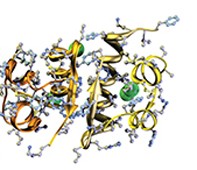Peer Reviewed
Feature Article Endocrinology and metabolism
Insulin in type 2 diabetes: which to use and when
Abstract
Many insulins and insulin delivery devices are available. Which should be used and when is influenced by the patient’s glycaemic profile and his or her preferred mode of delivery – reuseable pen injectors, prefilled disposable pens or syringes.
Key Points
- When maximum therapy with oral hypoglycaemic agents (OHAs) does not achieve the desired level of glycaemic control in a patient with diabetes, it is important to review adherence to appropriate lifestyle and OHA therapy and to confirm the absence of medical conditions or medications that can cause hyperglycaemia.
- Generally a night-time dose of basal insulin with continuation of OHA therapy achieves glycaemic targets. Sometimes an initial morning dose and/or a second dose is required.
- With time, further and higher doses of insulin may be required to control preprandial blood glucose levels. Excessive mealtime glycaemic increments should prompt review of the amount and type of carbohydrate eaten and consideration of mealtime acarbose and/or bolus prandial insulin.
- The choice of insulin and the method of injection are often linked. Sometimes a patient will use the same injector type for both basal and bolus insulins. The advantages that analogue insulins offer over traditional insulins are more clinically relevant in type 1 than type 2 diabetes.
- Once glycaemic control is achieved, reducing or stopping OHAs should be considered.
- Although premixed insulins are widely used and convenient for patients, the fixed proportions make dose titration difficult and may mean that controlling hyperglycaemia at one part of the day causes hypoglycaemia at another. Separate basal and bolus insulins makes insulin titration simpler, safer and more flexible.
Purchase the PDF version of this article
Already a subscriber? Login here.

